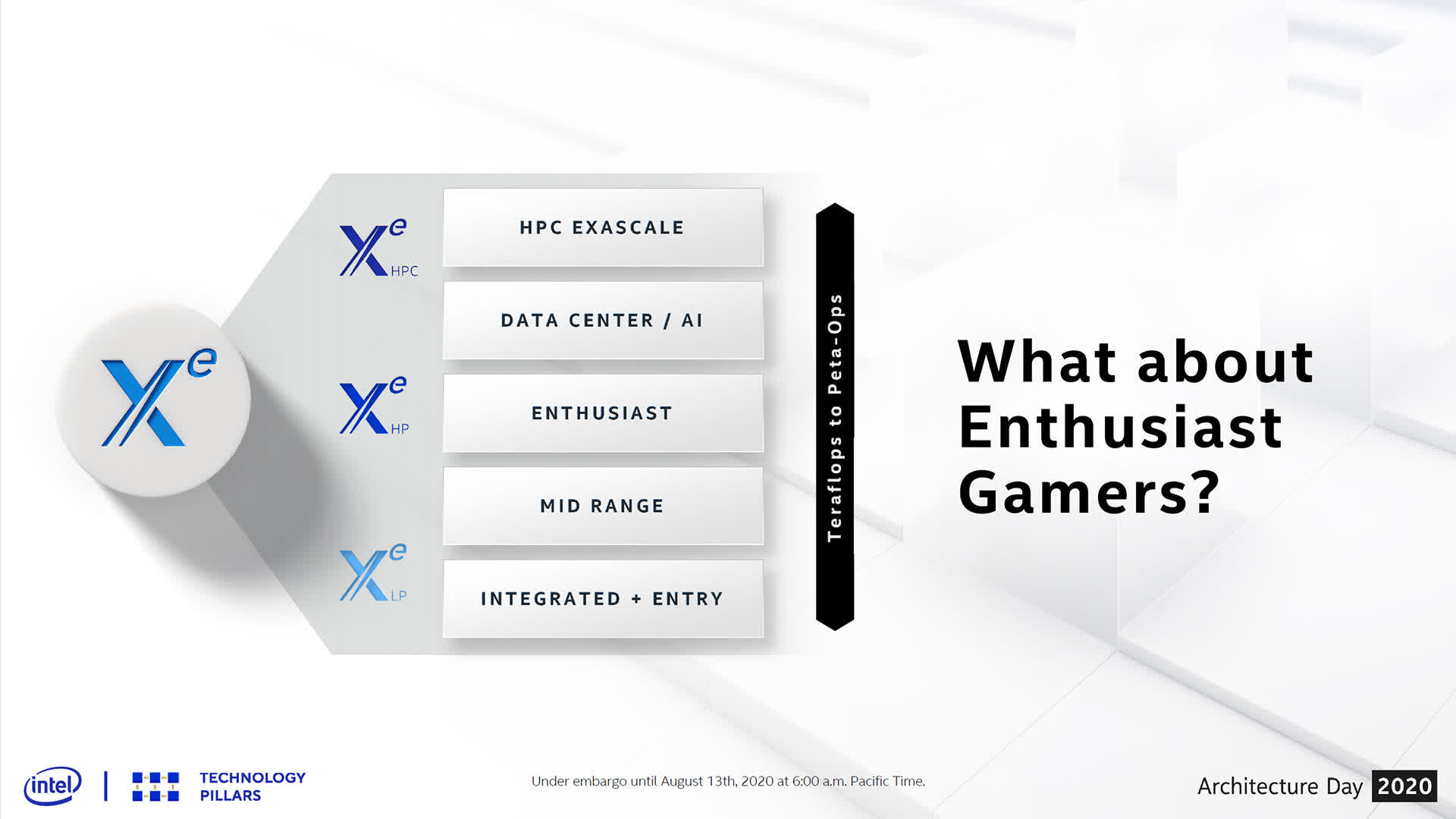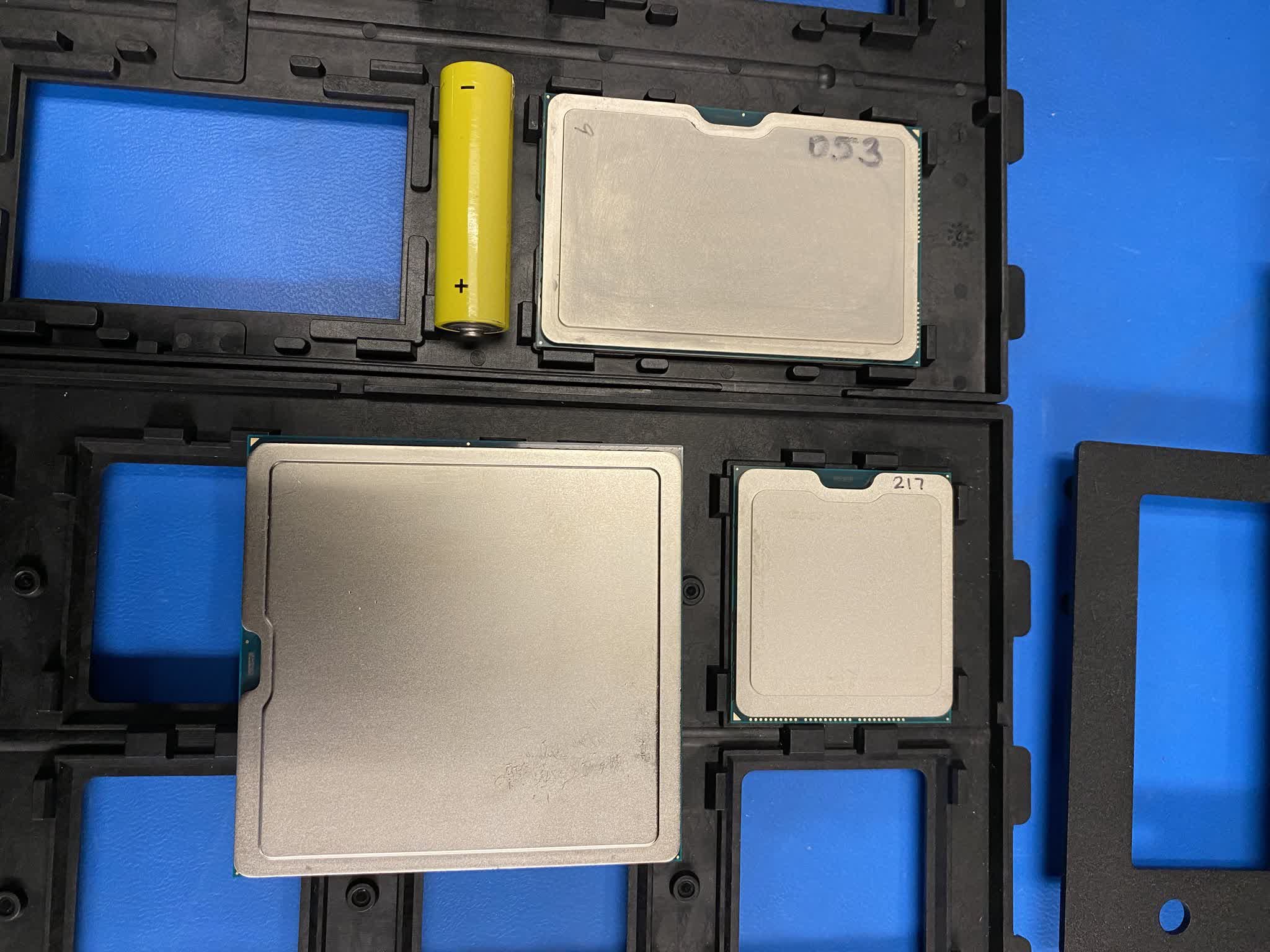Something to look forward to: The Intel Xe graphics project builds on top of over a decade of experience making integrated GPUs and its associated software stack. With the company getting closer to creating a full-fledged gaming GPU, expectation is high in that they could actually compete with AMD's Big Navi and Nvidia Ampere (RTX 30 series), ray tracing and all.

Earlier this year, Intel started shipping the first generation Xe desktop graphics cards to system builders. These are relatively modest performers that can only compete with some entry-level mobile graphics chipsets for laptops, but they're a great start and definitely more compelling than something like Nvidia's resurrected GeForce GT 710.
In the meantime, Intel engineers have been working hard on a new Xe microarchitecture that will scale from integrated graphics on mobile CPUs all the way up to the data center. During Intel's Architecture Day 2020 event, the company explained that it's working on Xe HPG chips that will pack GDDR6 memory and support for ray tracing.

Gamers and PC enthusiasts have been waiting for details on its development, but it was only last month that we got a tweet from Intel's chief GPU architect, Raja Koduri, who showed the company is already testing an Xe HPG chip using 3DMark's new Mesh Shader performance test.
Today, we got the first real hint (thanks, PC World) -- Intel's upcoming gamer-focused GPU should be able to reach at least GeForce RTX 3070 levels of performance according to synthetic workloads.
From 2012 to 2021 - same Intel Folsom lab, many of the same engineers with more grey hair , I was at Apple back then, getting hands on with pre-production crystalwell, 9 years later playing with a GPU that’s >20x faster! pic.twitter.com/RgmRJuhOXw
— Raja Koduri (@Rajaontheedge) March 12, 2021
Koduri shared a picture that shows many of the same people that worked on Intel's Crystal Well tech back in 2012, are now working on Xe HPG at the same Intel Folsom lab and seeing 20x the performance in synthetic benchmarks. Crystal Well refers to the Intel Iris Pro 5200 integrated graphics that featured an embedded DRAM cache and is capable of anywhere between 1,350 to 1,450 points on the 3DMark Fire Strike test.
Nvidia's nearly unobtainable RTX 3070 and RTX 3080 graphics cards can get around 25,000 points and 30,000 points, respectively. Intel's own Xe Max is able to get around 5,800 points.
Of course, that doesn't say how well an Xe HPG graphics card would compare with Nvidia's offering in terms of gaming performance. Still, there are a few things to reinforce the plausibility of this comparison. First, is that Intel will use a different process node than its 10 nm SuperFin, which makes it one of the possible buyers of TSMC's excess wafer capacity.

Intel's big "fabulous" Xe HP packages
The second thing to consider is that Intel's Xe HP architecture is designed to scale well using "tiles" that each have 512 execution units, or the rough equivalent of 4,096 shader cores for Nvidia and AMD graphics solutions. The Xe HPG will no doubt cut many of the superfluous features of its server counterpart in favor of more execution units running at higher clocks. And Intel could also use 2 HPG tiles linked via an embedded multi-die interconnect bridge (EMIB) to pack even more brute power, similar to SLI and Crossfire but with better scaling and less stuttering.
In any case, Intel could be preparing to hit Nvidia and AMD with a compelling graphics solution at a time when both are struggling to meet demand for their latest offerings. If the performance, power consumption, and pricing are right, Intel's Xe HPG could get adopted into a lot of gamer rigs whenever it arrives.
https://www.techspot.com/news/88910-intel-upcoming-xe-hpg-graphics-card-could-compete.html